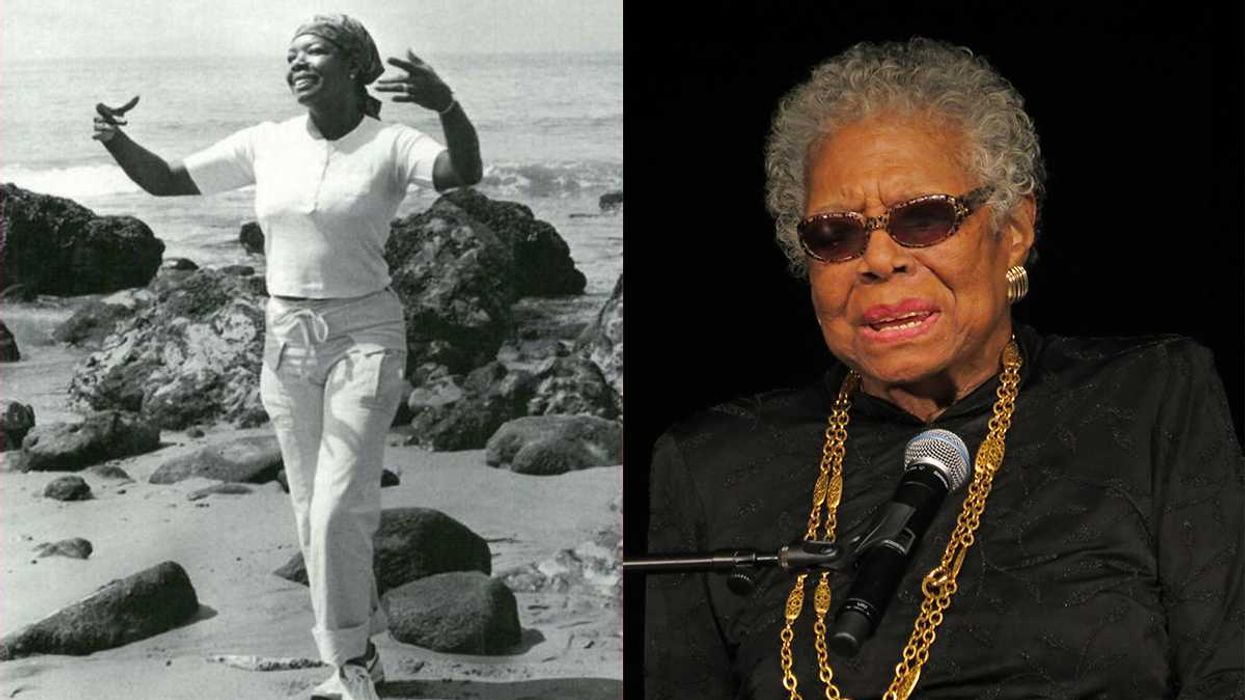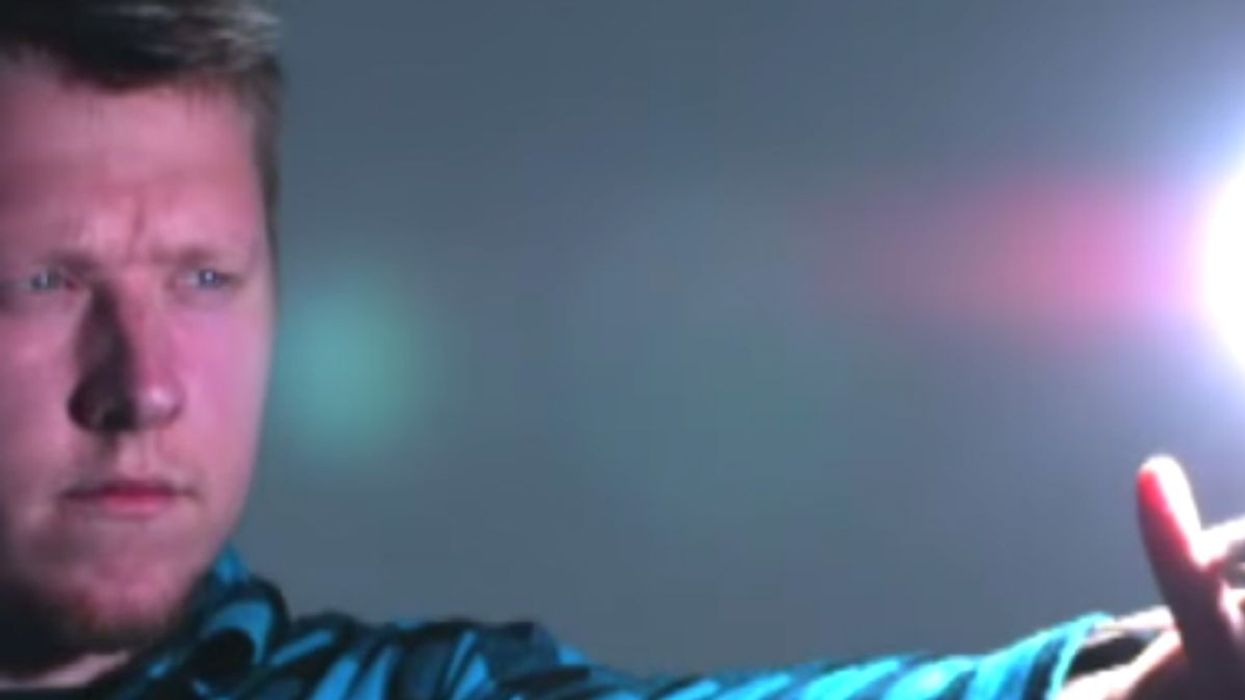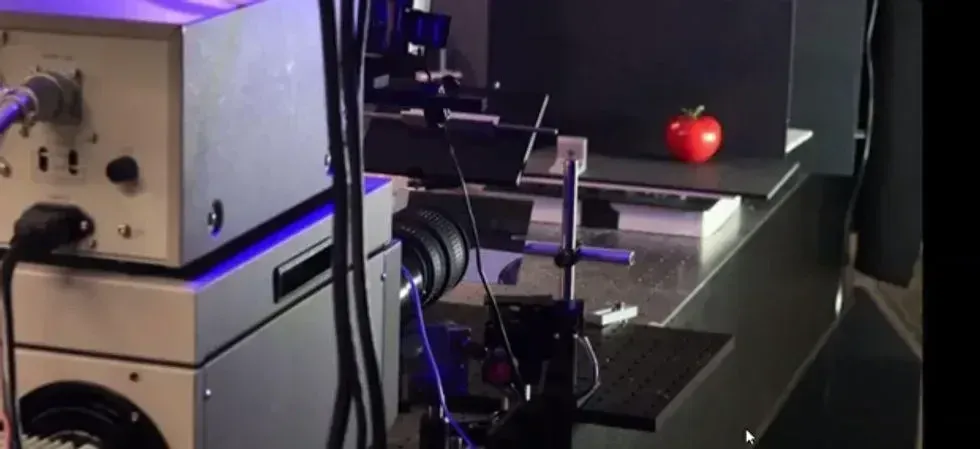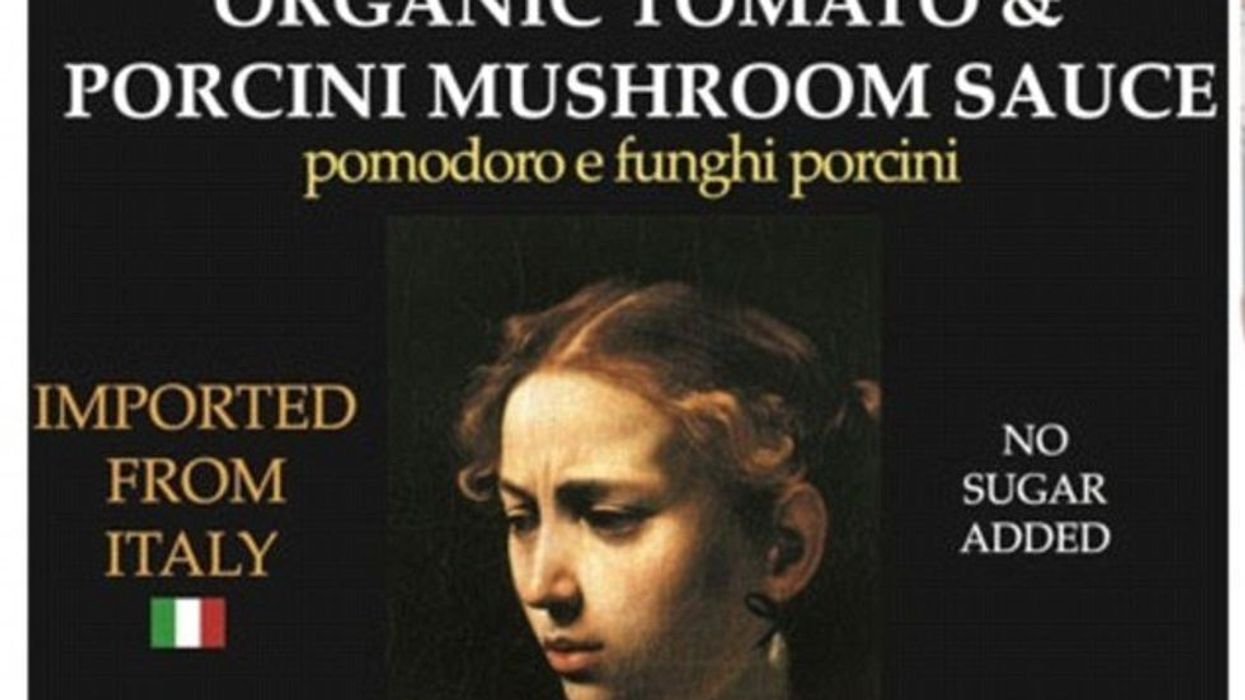As the summer of the ALS ice-bucket challenge draws to a close, a much quieter campaign has begun for another rare disease. Mitochondrial Disease Awareness Week finished earlier this month with barely a mention in the global media. But, while millions of gallons of water poured over celebrity heads raised $114 million from 2.4 million first-time donors for amyotrophic lateral sclerosis (ALS), mitochondrial disease (M.D.) has made its biggest waves in the context of controversy. Recently, the M.D.-related work of one Oregon doctor became a battleground for the future of genetic therapy—but that’s not exactly the buzz the mitochondrial disease community was hoping for.
Searching for a way to avoid passing down M.D.-related genetic mutations—which can only be inherited from the mother—Dr. Shoukhrat Mitalipov, a geneticist at Oregon Science and Health University, developed a procedure that removes the egg nucleus of a woman carrying M.D. mutations and implants it into a donor egg with healthy mitochondrial D.N.A., allowing the “original” mother to avoid transmitting M.D. to the fetus.
The technique, dubbed “three-parent in-vitro-fertilization” by the media, has been on geneticists’ radar for at least two years, but received a new blast of publicity when the Food and Drug Administration met in February to discuss a potential trial for the therapy. Yet, this D.N.A. splicing has been criticized by some scientists, religious organizations, and journalists as borderline eugenics, the belief that the genetic quality of the human race can—and should—be improved upon. Ethical questions swirled around Mitalipov’s therapy: Will this lead to “designer babies,” crafted not by nature but by science? How will this impact future civilizations? And, perhaps most importantly: do we cross the germline?
The germline relates to the sex cells used to pass along genes from one generation to the next and a germline mutation is any change in the D.N.A. that could be transmitted to descendants. The risk of making genetic changes we may not see the results of for generations is one that many scientists are understandably reticent to take. For others, the risks are justifiable if it can help circumvent a debilitating, potentially fatal disease. But while Mitalipov’s developments provide an interesting ethics debate, it’s the treatment of M.D., rather than its prevention, that may hold the key to medical advancements that could affect millions more than M.D.’s relatively tiny community.
[quote position="full" is_quote="true"]With a rare disease like M.D., you’re explaining what it is all the time. If you always have to explain what something is, we can never move past that.[/quote]
Though “three-parent I.V.F.” makes for a catchy, provocative moniker, many in the M.D. community (commonly known as the “mito community”) find the term sensationalistic and damaging to both the image they’re building and the true purpose of the technology. “Mitochondrial Replacement Therapy…is preventative in every sense. [It] ensures that disease is not passed from one generation to the next,” says Dr. Phil Yeske, the science and alliance officer for the United Mitochondrial Disease Foundation. “I think it’s unfortunate that there’s a bit of a spin.”
Mitochondria exist in every cell except red blood cells, and generate A.T.P.—a form of chemical energy that powers cellular function. At its simplest, mitochondrial disease causes the degeneration of cellular energy production, which can lead to disastrous dysfunction in any of the body’s major systems. According to the U.M.D.F., mitochondria are responsible for creating more than 90 percent of the energy needed by the body to sustain life and support growth.
Because we have mitochondria in almost every cell in our bodies, M.D. isn’t a single disease, but a spectrum—an umbrella term for genetic mutations that can manifest across different systems in unpredictable ways. There are over 200 known variations of M.D., and many more that remain unknown. According to U.M.D.F.’s online resource, symptoms range from developmental delays in the brain to vision loss to severe muscle weakness to liver failure. A runner at the bottom of U.M.D.F.’s symptom catalogue reads, “Think mitochondrial disease when three or more organ systems are involved.”
If you haven’t heard of mitochondrial disease, you’re not alone. In the United States, a rare disease is defined as one that affects less than 200,000 people according to the National Institutes of Health. Mitochondrial disease is commonly acknowledged to be one of the most complex and least understood of the rare diseases. U.M.D.F. estimates that each year, 1,000 to 4,000 children in the U.S. are born with M.D. Accounting for the many people who are misdiagnosed or undiagnosed, Yeske estimates that there are about 30,000 people living with M.D. in America.
But the numbers are a deceivingly small representation of a much larger problem. “When people hear ‘rare,’ they think it won’t affect them,’” says Wendy White, C.E.O. of Siren Interactive, a marketing firm that connects rare disease patient groups with pharmaceutical companies interested in developing treatments. “But there are 7,000 different rare diseases. They affect one in 10 people, so 30 million [people] in the U.S. and 300 million worldwide. That’s more than cancer and A.I.D.S. combined.”
Because of its complexity, M.D. isn’t easily reduced into snappy slogans or quick prevention tips, and marketing, which could drive research funding, remains a challenge.
The lack of prominent celebrity sufferers—like Michael J. Fox, the TV and film star who tirelessly advocates for eliminating Parkinson’s in our lifetime, and A.L.S.’s Lou Gehrig, the New York Yankees star whose diagnosis so shocked the world that many still refer to A.L.S. as “Lou Gerhig’s Disease,”—keeps the cause on the B-list as well. “To have someone come to Washington D.C. to speak; to give testimony to Congress?” U.M.D.F. Executive Director Charles Mohan, Jr., says, “We don’t have a celebrity for that.”
In 2006, actor Jack Black contacted the U.M.D.F. for a specialist referral, thinking his stepsister might have mitochondrial disease. It turned out she didn’t, but Black was so grateful for the organization’s assistance that he made generous donations, performed at benefit concerts, and appeared in PSAs. But he’s no official spokesperson, exemplifying the limited cache that rare diseases like M.D. carry in their fight to educate the public.
“Unfortunately, disease branding is important. It affects everything from awareness to F.D.A. funding,” says Cristy Ballens, an R.N. and executive director of MitoAction, a committee of parents, patients, and clinicians from top Boston hospitals. “With a rare disease like M.D., you’re explaining what it is all the time. If you always have to explain what something is, we can never move past that.”
[quote position="full" is_quote="true"]At this point we have nothing to lose. Why not give it a chance? They never thought he’d be alive this long.[/quote]
Over the phone on August 26, Sebastien Cotte, a bright, round-faced Firestone employee in Atlanta with a crew cut and a warm smile, talks about his son Jagger’s mitochondrial disease employing with ease the dense, technical terms he’s learned from his four-year crash course in becoming an expert on his son’s ailments.
He’d never even heard of M.D. when a doctor recommended that he and his wife Annett get baby Jagger tested in 2011. “Two months later we were told he had a mitochondrial mutation and they didn’t know how long he’d live…Oh wait, hold on a minute. We’re at the hospital right now.” He hangs up in order to speak with one of his son’s doctors.
He calls back three days later, explaining in a thick French accent that he and his wife were at the hospital for eight hours that day, working to get port cleared that they’d had implanted while their son was still an infant. (After a traumatic hospital visit during which doctors searched unsuccessfully for a vein to pump fluids into, it was decided that a small port, which allows access to Jagger’s veins even when they prove elusive, would be installed under his skin.) It’s just the opening anecdote in his hour-long play-by-play of his family’s battle with M.D.
Sebastien and Annett have been in and out of the hospital since Jagger was three months old. Doctors ordered an M.R.I. just after his first birthday, which showed a lesion in his basal ganglia, a clear sign of Leigh’s Disease, a rare and fatal form of M.D. Children diagnosed with Leigh’s before age two only have a five percent chance of living until their fifth birthday. Jagger turned four on September 14th. He’s a sweet-looking boy with sandy blonde hair and large eyes. His body and mouth droop heavily and most of his functions are managed by medical intervention. “There’s never been any talking or anything,” Sebastien says. “He doesn’t cry. Doesn’t have tears. But he does smile at us when he’s happy.”
It takes a person and a half to care for him. “The medication alone is a full-time job,” Sebastien says. Jagger is on 19 different pharmaceuticals, at 34 total doses per day. Every time he coughs—about 100 times a day—his parents or nurse have to suction his throat. He’s on oxygen 24/7. He has two feeding tubes: one into his stomach, the other in his intestines. The Cottes have temporarily relocated to Colorado to access cannabis oil, which helps with Jagger’s seizures. Since they started administering the oil through a feeding tube, the seizures have dropped from 20 per day to between four and seven. “At this point we have nothing to lose,” Sebastien says. “Why not give it a chance? They never thought he’d be alive this long.”
The Cottes have part-time help from a nurse. Still, says Sebastien, “We haven’t been to a movie or on a date for two years. Not that that’s a big deal or anything. But yeah, as far as social life, there’s none of that.” Sebastien is an ambassador for U.M.D.F. in the Atlanta area and attends the annual U.M.D.F. Symposium, where he takes notes and uploads a recap video for families who either can’t afford to attend, or are homebound taking care of their children.
For now, parent advocates like Sebastien and their grassroots organizations are the true muscle in the mitochondrial disease awareness movement. Almost every board member on the two biggest M.D. nonprofits, U.M.D.F. and MitoAction, has either lost a child to M.D., or has one currently diagnosed with the disease. With so few specialists in the field, parents often undertake a medical odyssey of Homeric proportions to figure out what’s going on with their children, coming out the other side armed with hard-won knowledge they’re eager to share.
Because each manifestation of M.D. is unique—siblings can share the same exact mutation and experience completely different problems—parents’ anecdotes shared at gatherings like the annual U.M.D.F. Symposium, through Facebook, and on social media forums specifically designed for the mito community form the most substantial, albeit informal, database of symptoms and treatments for mitochondrial disease. “Every day on Facebook people say, ‘My kid is doing this, my kid is doing that,’” Sebastien says. “So you get more specific ideas about what to ask the doctors. Sometimes they say no, but sometimes they say it’s worth a try.”
Slowly but surely, progress is coming. Aside from the preventative I.V.F. procedure, a drug called EPI-743, which boosts cellular antioxidant levels to protect mitochondria from damaging free radicals, is currently in Phase II clinical trials for treating Leigh’s Disease. Edison Pharmaceuticals, the company developing the treatment, hopes the drug will be the first specifically for mitochondrial disease to receive F.D.A. approval. So far the drug has been shown to delay disease progression and even reverse symptoms in some trial subjects.
After months of begging, Sebastian Cotte got his son placed in the EPI-743 trial. Results seem positive, though Jagger’s body metabolizes medication more quickly than most, so his results plateau faster. He’s been bumped up to the maximum trial dosage, and the Cottes are hopeful the drug will work smoothly.
There is much riding on the success of EPI-743. “That first drug in the market is so important,” Yeske says. “It demonstrates that the F.D.A. is comfortable with the disease. Edison is plowing virgin ground here and, to their credit, it’s very difficult terrain.”
To build F.D.A. momentum, you need high levels of public awareness and demand, but even more hard research. The mito community has little of either. “When you’re working with something as common as high blood pressure,” Ballens says, “it’s important to have long studies and rigorous data. With mito, when my kid is on the line, we don’t always have that time.”
But the humble, urgent persistence of a small group of families has started to make serious strides. “The F.D.A. used to just look at the hard science,” Yeske says. “But it’s been shown that well-organized patient groups interacting with regulatory bodies can help them set meaningful end goals and outcomes. [The mito community] has been able to gather and, in certain cases, show the F.D.A. there’s no hope for these children, and that it may be worth taking a risk on a drug.”
White says, “The rare disease community as a whole is much more patient-driven … They push for the development. Remember Lorenzo’s Oil? I can’t tell you how many times it happens, and it happens faster because of the internet.”
If EPI-743 becomes the first agency-approved therapeutic for M.D., it could pave the way for other companies with different approaches to move their own drug candidates forward. Stealth Peptides is developing Bendavia, which strengthens the mitochondrial membrane. Bendavia is currently being tested on heart disease patients, but Stealth Peptides wants to look into treating patients with mitochondrial disease as well. Raptor Pharmaceuticals also has a new compound called RP-103 that boosts the amount of the amino acid responsible for producing glutathione, the “master” antioxidant, which could provide similar benefits as EPI-743.
These advances are a point of pride and hope for the mito community, but they also have ramifications far beyond the medical landscape currently associated with M.D. “It’s all energy. Mitochondria create energy and energy is life,” says Yeske. “That doesn’t necessarily fit with how our doctors are trained. It may sound like mumbo jumbo, or transcendent in some way. But really, it’s true.” Mitochondrial mutation has been implicated as a factor in many of the major degenerative diseases of our time: heart disease, stroke, Alzheimer’s, cancer. Edison entered a $4 billion dollar partnership with the Japanese pharmaceutical company Dainippon Sumitomo to develop EPI-743 with the goal of redirecting research to focus on mitochondria’s function in all degenerative diseases.
As regulatory agencies and big money start to cozy up to M.D., there’s been a bigger push to raise awareness among the general public. The U.M.D.F. now has ambassadors in 152 countries and in every state in the United States. Cities like Philadelphia and Seattle have started officially declaring a week in September as Mitochondrial Awareness Week, a rallying point for fund- and awareness-raising events like last weekend’s Energy-for-Life walks in Columbus, Omaha, New Orleans, New York, and Chicago or Monday’s “World Stay in Bed Day.”
The biggest initiative for this year’s awareness week was the launch of a mitochondrial patient-populated registry, available for free to all M.D. interest groups across the United States, built to track all cases and symptoms of mitochondrial disease in one central location. It is the first official database of its kind, and hints at a future that raises mitochondrial disease from the fringe and into the heart of medical progress, still without any centralized slogan, celebrity face, or viral fundraising campaign.
“The pharmaceutical industry—and frankly, the medical community—[is] just now starting to understand the impact of mitochondria on health in general,” says Christine Cox, the director of outreach advocacy for MitoAction. “If I had to bet however, I would guess that ‘mitochondria’ will be a household word in 10 to 20 years.”
















 TikTok · Bring Back Doors
TikTok · Bring Back Doors 



 Label for Middle Earth Organics' Organic Tomato & Porcini Mushroom Sauce
Label for Middle Earth Organics' Organic Tomato & Porcini Mushroom Sauce "Judith Beheading Holofernes" by Caravaggio (1599)
"Judith Beheading Holofernes" by Caravaggio (1599)